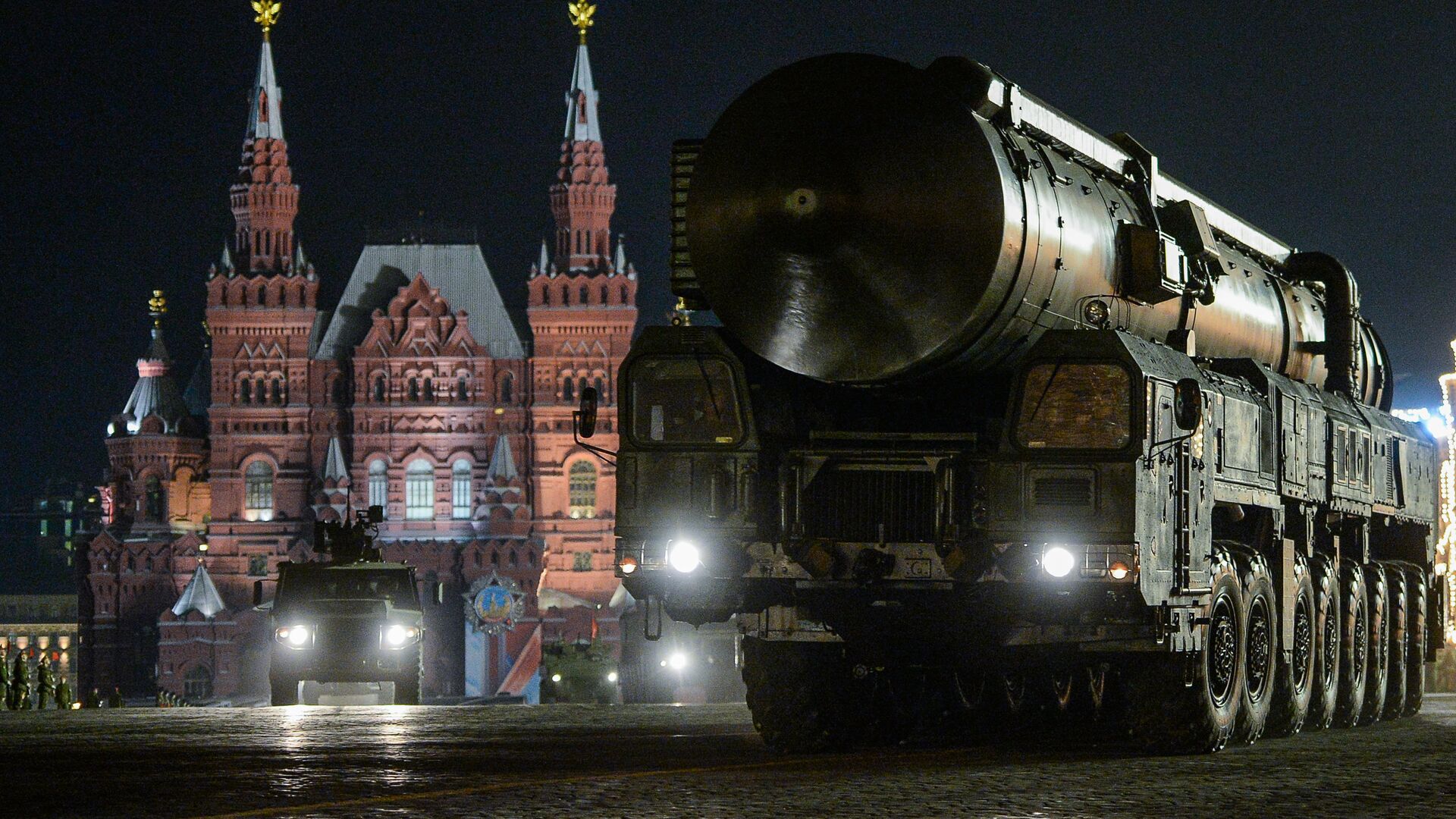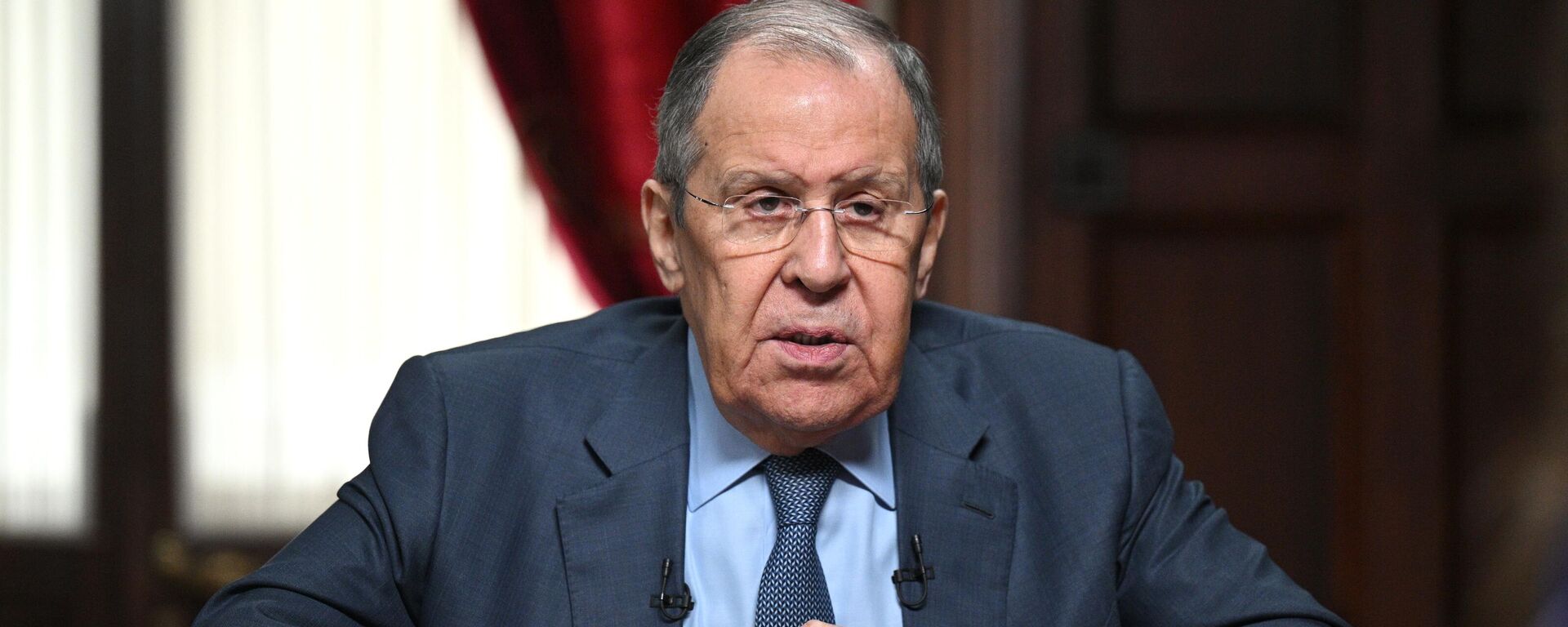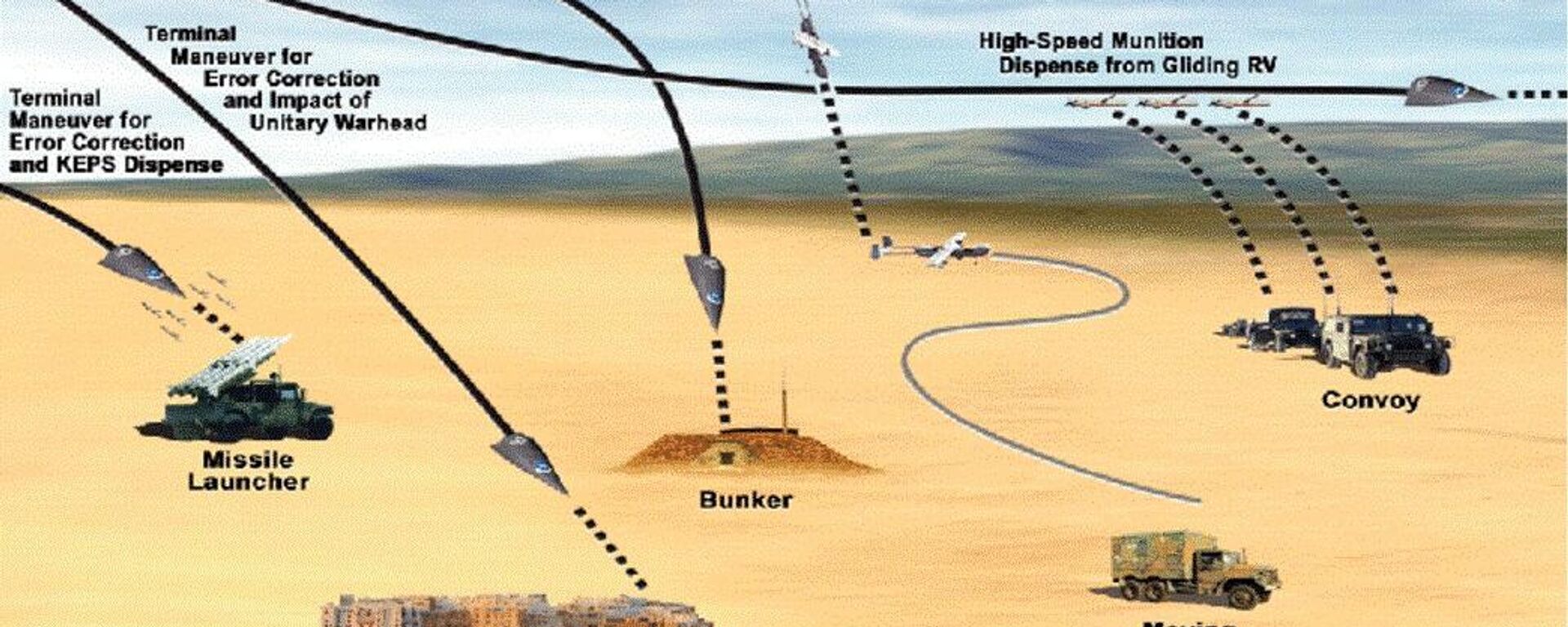https://sputnikglobe.com/20240904/russias-move-to-update-its-nuclear-doctrine-provoked-by-natos-increasingly-brazen-aggression-1120014661.html
Russia’s Move to Update Its Nuclear Doctrine Provoked by NATO’s Increasingly Brazen Aggression
Russia’s Move to Update Its Nuclear Doctrine Provoked by NATO’s Increasingly Brazen Aggression
Sputnik International
The Kremlin confirmed on Wednesday that Moscow is working on an updated nuclear doctrine, taking account of the actions of the collective West. Veteran military analyst and retired Russian Army Colonel Viktor Litovkin breaks down the details of Russia’s current nuclear doctrine, and comments on what the updated document may entail.
2024-09-04T15:21+0000
2024-09-04T15:21+0000
2024-09-04T15:21+0000
analysis
viktor litovkin
dmitry peskov
maria zakharova
russia
ukraine
nato
foreign ministry
kremlin
https://cdn1.img.sputnikglobe.com/img/103891/74/1038917497_0:197:2943:1852_1920x0_80_0_0_56f350c0804d52880f4018d32f2216e9.jpg
“Against the backdrop of challenges and threats provoked by the countries of the so-called Collective West, the Russian Federation is currently working to develop new approaches in the context of the upcoming renewal of the nuclear doctrine,” Kremlin spokesman Dmitry Peskov told reporters Wednesday on the sidelines of the Eastern Economic Forum in Vladivostok.Foreign Ministry spokeswoman Maria Zakharova clarified that the update to the nuclear doctrine is connected to the “strategic risks” resulting from Western countries’ policy in general, and to “global and regional challenges to international security which are multiplying thanks to the absolutely irresponsible position of the West.”Wednesday’s remarks come after a series of statements from senior Russian officials, including President Putin and Foreign Minister Lavrov, confirming that efforts were underway to update Russia’s nuclear doctrine, and make possible changes to account for threats, including discussions among NATO countries about the permissibility of the use of low yield, tactical, so-called battlefield nuclear weapons.“The United States and NATO are becoming increasingly aggressive toward Russia, and we need to make clarifications to some fundamental documents” regarding Russia’s nuclear doctrine, veteran military analyst Viktor Litovkin told Sputnik.Russia “is not going to seek hegemony, as the US is doing, but we are also not going to lose our independence, sovereignty and right to independent action,” Litovkin added.NATO has tested Moscow’s red lines repeatedly over the course of the proxy conflict in Ukraine, gradually ramping up the deadliness of offensive strike systems sent to Kiev, providing the Zelensky regime with intelligence and other battlefield support, looking the other way on the flow of mercenaries to the battlefield (which some Russian commanders suspect include active duty NATO servicemen), sabotaging peace talks, boasting openly about the alliance’s intention to use the crisis to try to “weaken Russia” and fight Russia 'to the last Ukrainian', and feigning ignorance of Ukraine’s attempts to target the assets of Russia’s nuclear triad.Russia’s current nuclear doctrine consists of four key points divided among two documents, according to Litovkin – one being Russia’s general Military Doctrine, and the other a June 2020 presidential decree ‘On the Fundamentals of the State Policy of the Russian Federation in the Field of Nuclear Deterrence’.The former provides for the use of nuclear weapons in two cases:The latter allows Russia to fire its nuclear weapons:Litovkin believes the ultimate goal of the updated Russian nuclear doctrine will be “to combine these two documents into one,” and “clarify the role of nuclear weapons in ensuring Russia’s security and ensuring deterrence against a possible aggressor.”“I believe these two documents will form the basis of the new military doctrine. There may also be some additional clarifications in connection with the fact that the international situation is changing,” Litovkin said.
https://sputnikglobe.com/20240827/russian-doctrine-on-use-of-nuclear-weapons-under-clarification---lavrov-1119927397.html
https://sputnikglobe.com/20240615/rejection-of-putins-peace-offer-exposes-true-motivations-of-natos-proxy-war-in-ukraine-1118967820.html
https://sputnikglobe.com/20240726/uk-plans-to-build-new-missiles-to-target-russia-linked-to-pentagons-mad-conventional-strike-scheme-1119524354.html
russia
ukraine
Sputnik International
feedback@sputniknews.com
+74956456601
MIA „Rossiya Segodnya“
2024
News
en_EN
Sputnik International
feedback@sputniknews.com
+74956456601
MIA „Rossiya Segodnya“
Sputnik International
feedback@sputniknews.com
+74956456601
MIA „Rossiya Segodnya“
why is russia updating its nuclear doctrine, what does russia's nuclear doctrine say, does russian nuclear doctrine allow for first strikes, does russian nuclear doctrine allow for preemptive attacks
why is russia updating its nuclear doctrine, what does russia's nuclear doctrine say, does russian nuclear doctrine allow for first strikes, does russian nuclear doctrine allow for preemptive attacks
Russia’s Move to Update Its Nuclear Doctrine Provoked by NATO’s Increasingly Brazen Aggression
The Kremlin confirmed on Wednesday that Moscow is working on an updated nuclear doctrine, taking into account the actions of the collective West. Veteran military analyst and retired Russian Army Colonel Viktor Litovkin breaks down the details of Russia’s current nuclear doctrine, and comments on what the updated document may entail.
“Against the backdrop of challenges and threats provoked by the countries of the so-called Collective West, the Russian Federation is currently working to develop new approaches in the context of the upcoming renewal of the nuclear doctrine,” Kremlin spokesman Dmitry Peskov told reporters Wednesday on the sidelines of the Eastern Economic Forum in Vladivostok.
“This update is required by the current agenda and state affairs which arose as a consequence of the actions of the collective West,” Peskov said. “What kinds of actions are we talking about? They include the rejection of dialogue with the Russian Federation, the continued policy of attacking the interests and security of the Russian Federation, and provoking the protraction of the hot war in Ukraine. This cannot but have consequences. All of this has been taken account of by Moscow, is being analyzed, and will form the basis for the proposals that will be formulated.”
Foreign Ministry spokeswoman Maria Zakharova clarified that the update to the nuclear doctrine is connected to the “strategic risks” resulting from Western countries’ policy in general, and to “global and regional challenges to international security which are multiplying thanks to the absolutely irresponsible position of the West.”
Wednesday’s remarks come after a series of statements from senior Russian officials, including President Putin and Foreign Minister Lavrov, confirming that efforts were underway to update Russia’s nuclear doctrine, and make possible changes to account for threats, including discussions among NATO countries about the permissibility of the use of low yield, tactical, so-called battlefield nuclear weapons.
“The United States and NATO are becoming increasingly aggressive toward Russia, and we need to make clarifications to some fundamental documents” regarding Russia’s nuclear doctrine, veteran military analyst Viktor Litovkin told Sputnik.
“The war in Ukraine is not a war between Ukraine and Russia. It is a war between the West and Russia using the territory of Ukraine, and the lives of Ukrainian servicemen. It is an attempt to weaken Russia, to bring Russia to ruin and to deprive Russia of its competitive advantage in the international arena,” Litovkin explained.
Russia “is not going to seek hegemony, as the US is doing, but we are also not going to lose our independence, sovereignty and right to independent action,” Litovkin added.
NATO has tested
Moscow’s red lines repeatedly over the course of the proxy conflict in Ukraine, gradually
ramping up the deadliness of offensive strike systems sent to Kiev, providing the Zelensky regime with
intelligence and other battlefield support, looking the other way on the flow of mercenaries to the battlefield (which some Russian commanders
suspect include active duty NATO servicemen),
sabotaging peace talks, boasting openly about the alliance’s intention to use the crisis to try to
“weaken Russia” and fight Russia
'to the last Ukrainian', and feigning ignorance of Ukraine’s
attempts to target the assets of Russia’s nuclear triad.
Russia’s current nuclear doctrine consists of
four key points divided among
two documents, according to Litovkin – one being
Russia’s general Military Doctrine, and the other a
June 2020 presidential decree ‘On the Fundamentals of the State Policy of the Russian Federation in the Field of Nuclear Deterrence’.
The former provides for the use of nuclear weapons in two cases:
1.
if Russia or its allies are attacked by a country or coalition of countries using nuclear weapons,
2.
if Russia is attacked by an aggressor or coalition of aggressors using conventional means so severe the very existence of the state is threatened.
The latter allows Russia to fire its nuclear weapons:
1.
if it becomes aware that a ballistic missile has been launched toward it, or
2.
if a strike is launched at government and military command and control centers.
Litovkin believes the ultimate goal of the updated Russian nuclear doctrine will be “to combine these two documents into one,” and “clarify the role of nuclear weapons in ensuring Russia’s security and ensuring deterrence against a possible aggressor.”
“I believe these two documents will form the basis of the new military doctrine. There may also be some additional clarifications in connection with the fact that the international situation is changing,” Litovkin said.







